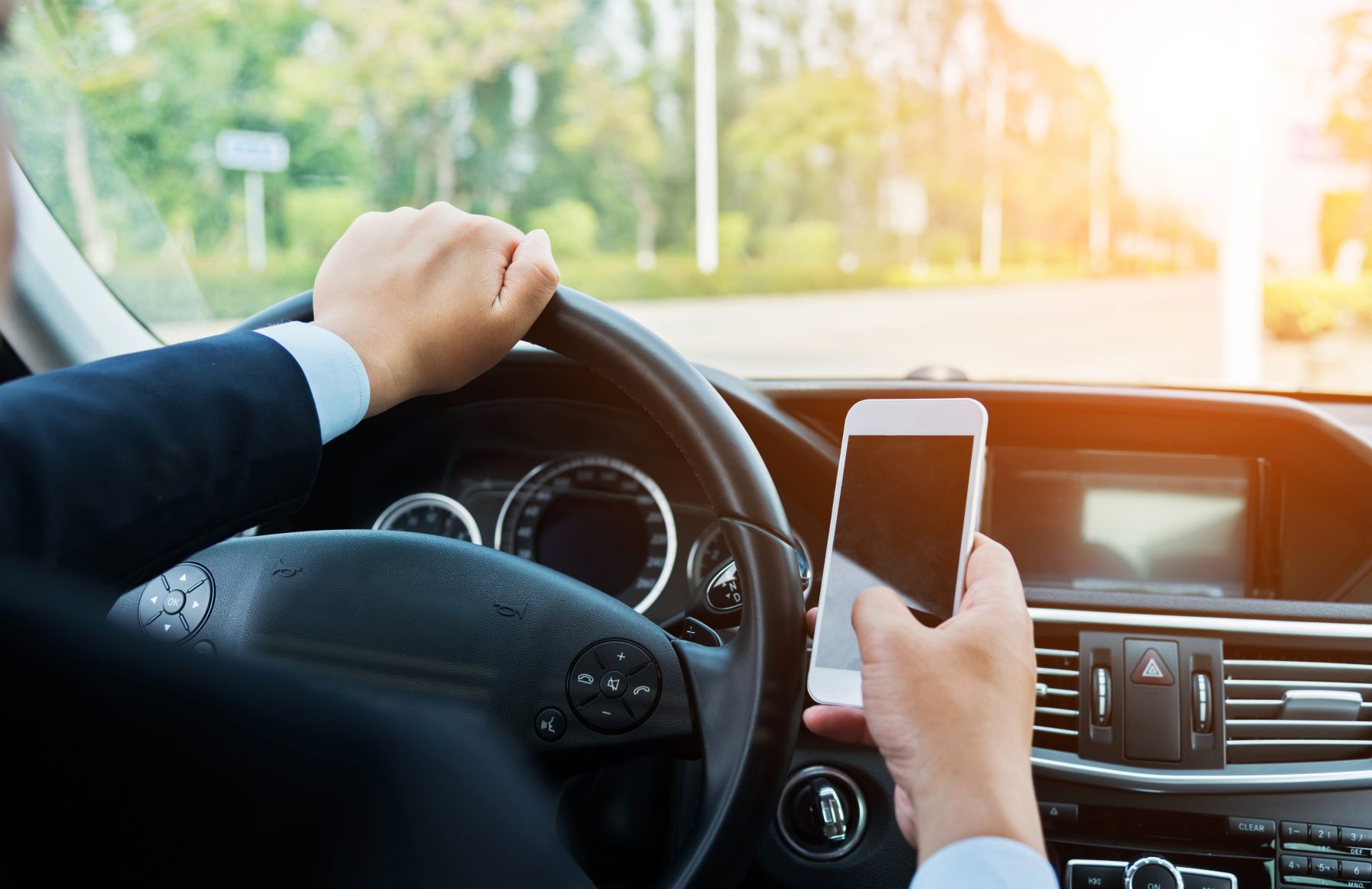Texting & Driving Accidents: Understanding The Consequences
It’s a story that we see on the news so often that we sometimes tune it out. A distracted driver using a cell phone lets their car wander out of its lane and into the path of another vehicle, the steps of a pedestrian, or a stationary object like a tree. The result is far more important than a totaled vehicle. It can be civil liability, criminal charges, and serious injuries – or even death.
We all know the dangers associated with texting and driving, but we sometimes don’t think about the real consequences of a mishap. It seems that once we get away with doing it a few times, we feel like it’s safe because “I know what I’m doing” or “I’m in control.”
Of course, that type of rationalization is rarely right, and it will not hold any water against the legal system. The victims of distracted driving accidents are highly sympathetic witnesses. That is, a jury will almost always take pity on someone who suffered an injury or death because of your carelessness. It does not take much evidence to verify that you were using the cell phone, and once that information is entered into evidence, your position is almost impossible to maintain.
When an accident occurs, there may be eyewitnesses who saw you using your phone. If not, the plaintiff’s legal team may be able to subpoena your cell phone records to find out if you were texting when the accident took place. If there is evidence that you were using your phone at the time of an accident – even if it really did not cause the collision – your case will be very weak and almost impossible to win. If you cause an accident while using your phone – or even just appearing to use your phone – there could be repercussions far beyond vehicle damage or a claim against your insurance.
The Magnitude of the Cell Phone Problem
As the use of cell phones has grown, there has been corresponding growth in the number of accidents that can be attributed to texting while driving. The National Safety Council reports that 1.6 million crashes each year are caused by a driver using a cell phone. That’s roughly 25% of all motor vehicle crashes. These wrecks result in roughly 390,000 injuries each year. With over 280 million cell phones in the United States, nearly every driver has one close by and, unfortunately, may also have it in hand as they meet or pass you.
Cell phones are so commonplace that we don’t think enough about how troublesome they can be. We have figured out how to talk to our kids while texting, watch TV while surfing social media, and send an email about one meeting while sitting in another meeting. If we can do all of those things while holding a cell phone, we often think we can drive with one too.
The evidence shows something different. If you believe that you are in control of your vehicle while texting, you may want to think again. Research shows that a driver distracted by cell phone use is actually six times more likely to cause a crash than a drunk driver. Despite how some drivers downplay the seriousness of their cell phone use, these statistics show that the problem is very real and often deadly.
What Happens When You Text While Driving
The average time required to answer a text message is about five seconds. In that time, a car traveling at 60mph will cover go about 440 feet – almost a tenth of a mile. That’s enough time and distance for a lot of things to happen. A vehicle could pull out in front of you. A vehicle that you’re following at a safe distance could suddenly be stopped in front of you. An animal or a child could run out in front of you. If five seconds doesn’t seem like a long time, try closing your eyes for five seconds while someone else is driving, and imagine what could happen in that time.
Remember that your car needs your full attention while driving. This includes your eyes, hands, and mind, all of which will be preoccupied with your phone even if you are only viewing a text message. You cannot spread your attention that thin and still maintain full control of your vehicle. You need to see everything that’s going on around you, not just ahead of you but in your mirrors. You need both hands on the wheel, and you need your mind fully focused on what’s going on around you. Even the slightest loss of concentration can cause you to wander out of your lane or miss any of an endless number of hazards that could pop up anywhere around you.
The Criminal Consequences
The serious dangers surrounding phone usage by drivers have spurred states to pass laws restricting the use of wireless devices by those with control of a vehicle. Some states are so strict that they do not permit a driver to even hold a cell phone, much less use it. Most such violations are primary offenses, meaning a police officer can pull you over and write you a ticket for cell phone use even if you are not breaking any other traffic law. That risk is present for you even if you don’t have the misfortune to be involved in an accident, and that ticket can prove costly on your insurance premiums for years to come.
Of course, getting a ticket is nothing compared to the legal ramifications of having a crash while using a cell phone. If someone is injured or killed – even in your own car – you could face charges like assault and even vehicular manslaughter, depending on the state. These charges can lead to the loss of your license, significant fines, or jail time. There is no text message that is important enough to risk those outcomes.
Making It Real
Statistics rarely change behavior. We can cite the number of deaths and injuries attributed to distracted driving, but those figures are faceless. The only way to feel the true impact of this careless behavior is to hear from the real people who were affected by texting and driving accidents. Sometimes it is far more impactful to hear the entirety of one person’s story about a texting and driving incident than to see a long list of statistics that mask the real human toll.
The National Safety Council, National Highway Traffic Safety Administration, and many private companies have put together educational videos and other materials to drive home the importance of refraining from distracted driving. These efforts include testimonials from people who have been injured in texting and driving accidents as well as from those who have lost loved ones to these incidents. Putting real faces and real names to the people who suffer after these accidents is key to helping us all to understand that there are real consequences to these decisions.
How to Build Safe Phone Habits
Almost everyone has a cell phone, which means that almost every driver has one in the car. From our bank accounts to our meetings, our dinner plans to the weather, we rely on our cell phones for countless important tasks that keep us organized, safe, and happy. Yet we also count on our cars to take us to all those places that the cell phone reminds us we need to go. So how do we keep this competition from turning into a crash? There are lots of options on the table, many of which are free and some of which provide benefits beyond simply keeping us away from our phones when we are driving.
Putting the Phone on Silent
We are all accustomed to constant chimes and dings from our cell phones, but when we’re behind the wheel, those sounds represent the temptation to do something dangerous. Sometimes the easiest way to avoid the distraction of incoming notifications is simply to shut them off. Once you reach your destination and are safely parked, you can pick up the phone and get caught up.
Letting Someone Handle Your Phone for You
Sometimes we’re facing a long drive, or we’re expecting a critical call or message. In those cases, the best option might be to let someone else in the car handle your phone. They can screen incoming content so that you know when you might need to pull over and respond. You can keep your drive on schedule without worrying that you’ll miss important information.
Taking Occasional Phone Breaks
If you’re traveling solo or just want to handle communications yourself, determine an interval and pull off every so often to check in. Give yourself 20 minutes of road time, then find a safe place (not the emergency lane) to go through your notifications quickly and take care of any needed responses.
Teaching Good Habits
Whether you’re modeling behaviors for your kids or your co-workers, the atmosphere in your vehicle about distracted driving will be picked up by others. Teach others your safe phone habits so that they’ll pick them up as well. In this way, you will be able to create other safe drivers besides just yourself.
Setting Up Auto Replies
While you’re sitting at home some evening, check your phone settings. You may be able to set up automatic replies to text messages. Simply tell the sender “Thanks for your message. I’m currently driving but will reply at my next stop.” That will let the sender know that you did receive the message and will reply when it’s safe to do so. The same system can also be used with your email accounts as well. Activate those helpful features before you get on the road so that you can avoid the temptation to respond to notifications while still being courteous and considerate to those who need to contact you.
Easy Ways to Eliminate Distracted Driving
Many of these tips require your attention every single time you drive. There are other options that essentially activate themselves when you get on the road. This makes it easy to stay off the phone without having to remember to activate or deactivate anything before you head out.
DriveMode
With this on your phone, your contacts receive auto-replies and cannot contact you while you are driving. They’ll get an immediate response without you having to do anything. The app can be set to activate at a certain speed rather than blocking calls while you’re in the car wash or waiting at the drive-through. Once it’s on, you’re worry-free while still staying in touch with your contacts.
LifeSaver
This app not only activates while you drive, but it also gives you feedback about your overall driving habits, making you a better driver even without your phone.
TrueMotion Family
Kids, cars, and cell phones are a dangerous combination. This app does not deactivate your phone, but it tracks your young driver’s driving behavior to highlight points when distraction may have been an issue, sending the info to you for use in an important conversation with your teen.
Eyes on the Road, Phone on the Seat
Even a minor mishap while driving can be an expensive and frightening experience. At its worst, it can change your life forever. Whether it’s a few years of higher insurance premiums, a long court battle over liability, or the burden of knowing for the rest of your life that your actions cost someone their life, the consequences of distracted driving will always last much longer than the time it would take to pull off, park, and handle the message safely. Remember that it’s always best to let even the most important notification wait for a few minutes to keep you from having a lifetime to regret your decision.

